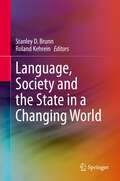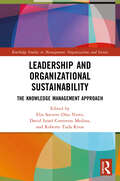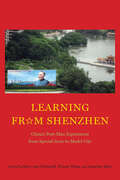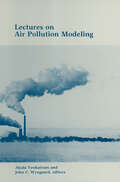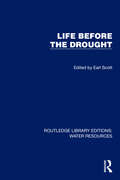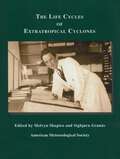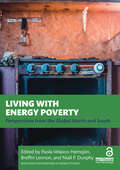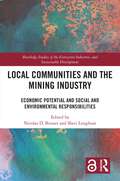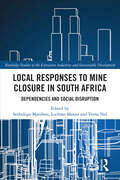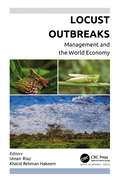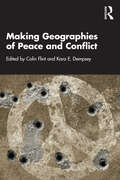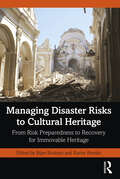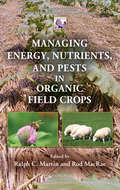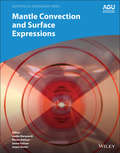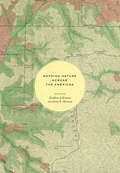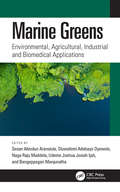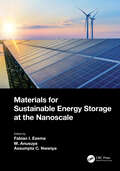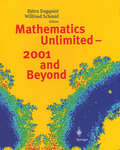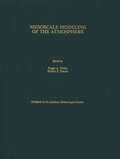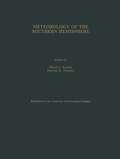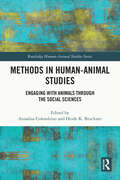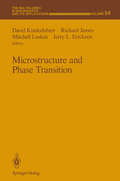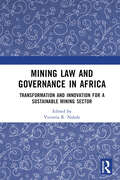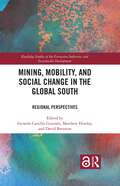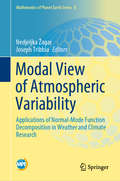- Table View
- List View
Language, Society and the State in a Changing World
This book addresses the changing contemporary language worlds in three major contexts. It first discusses how the language landscape maps of cities are changing as a result of increased migration, globalization and global media. These features are evident in place names and place name changes as well as the densities and frequencies of language spoken and used in texts. The second section discusses how the state itself is responding to both indigenous and heritage groups desiring to be included and represented in the state’s political landscapes and also expressions of art and culture. In the third section, the authors address a number of cutting-edge theses that are emerging in the linguistic geography and political words. These include the importance of gender, anthropogenetic discourse, the preservation of endangered languages and challenges to a state’s official language policy. Through including authors from nine different countries, who are writing about issues in twelve countries and their overlapping interests in language mapping, language usage and policy and visual representations, this book provides inspiring research into future topics at local, national, regional and international scales.
Leadership and Organizational Sustainability: The Knowledge Management Approach (Routledge Studies in Management, Organizations and Society)
The book presents a new type of leadership focused on sustainable human development and organizational sustainability, which is based on the self-realization of the person of the leader, which means the satisfaction of their needs, according to the scale of Abraham Maslow, through integral human development in all aspects of life. Because the term "leader" appears to refer to anyone with the authority to confer a position with subordinates, the reality within organizations has shown that a leader must go further and demonstrate commitment, awareness, and concern for the common good. Which person has these characteristics? People who have had more opportunity to develop in different areas of their being, resulting in them being conceived as more educated. The qualities in a person are the basis of leadership. Education and practice are much more important than all hereditary and genetic codes. This volume explores the various ways of making explicit the dimensions of social, economic, and environmental sustainability through knowledge management that addresses the identification, collection, processing, circulation, use, exchange, and preservation of knowledge within operating systems and the context of organizations, considering issues that contribute to sustainability – human and organizational – where the leader is the main actor and the means is knowledge management.
Learning from Shenzhen: China’s Post-Mao Experiment from Special Zone to Model City
This multidisciplinary volume, the first of its kind, presents an account of China’s contemporary transformation via one of its most important yet overlooked cities: Shenzhen, located just north of Hong Kong. In recent decades, Shenzhen has transformed from an experimental site for economic reform into a dominant city at the crossroads of the global economy. The first of China’s special economic zones, Shenzhen is today a UNESCO City of Design and the hub of China’s emerging technology industries. Bringing China studies into dialogue with urban studies, the contributors explore how the post-Mao Chinese appropriation of capitalist logic led to a dramatic remodeling of the Chinese city and collective life in China today. These essays show how urban villages and informal institutions enabled social transformation through cases of public health, labor, architecture, gender, politics, education, and more. Offering scholars and general readers alike an unprecedented look at one of the world’s most dynamic metropolises, this collective history uses the urban case study to explore critical problems and possibilities relevant for modern-day China and beyond.
Lectures on Air Pollution Modeling
This volume is concerned with the physics and the application of air pollution modeling on scales up to about 50 km. Its eight chapters, comprising the diverse points of view of seven authors, remain substantially in their original, lecture-note form. The result is not a smoothly flowing monograph but instead a richly textured, lively collection of the seasoned thoughts and perspectives of experienced researchers and practitioners.
Life Before the Drought (Routledge Library Editions: Water Resources)
Little attention had been paid to the realities of life in the Savanna-Sahel of West Africa before the drought of 1968-74, but this book, originally published in 1984 provides a set of authoritative accounts of the way in which the inhabitants cope with what outsiders perceive as a harsh environment. The peoples of the Savanna-Sahel are shown to be developers of strategies and technologies to manage their resources. Their understanding of the environment enables them to contribute substantially to any plans for economic and ecological recovery in the region. Their cooperative modes of life lead to greater social complexity and capacity for survival. Geographers, anthropologists and social historians should find the interdisciplinary human ecological approach of the book appealing. Development economists and rural planners will find the chapters on land-use patterns, and resource use particularly valuable.
The Life Cycles of Extratropical Cyclones
This book presents the expanded versions of invited papers presented at the International Symposium on the Life Cycles of Extratropical Cyclones, held in Bergen, Norway, 27 June–1 July 1994. It is of particular interest to historians of meteorology, researchers and forecasters. The material can be used for advanced undergraduate and undergraduate meteorology courses, and it represents a useful source of references to extratropical cyclones. The book provides the historical background of extratropical cyclone research and forecasting from the eighteenth to the mid-twentieth century. It also presents extratropical cyclone theory, observations, analysis, diagnosis and prediction.
Living with Energy Poverty: Perspectives from the Global North and South (Routledge Explorations in Energy Studies)
Living with Energy Poverty: Perspectives from the Global North and South expands our collective understanding of energy poverty and deepens our recognition of the phenomenon by engaging with the lived experiences of energy-poor households across different contexts.Understanding the lived experience of energy poverty is an essential component in the design of any effort to alleviate what is fundamentally a deep-rooted, multi-faceted, wickedly complex problem. This requires a nuanced understanding of the causal factors and the research methods that can respond to the flexible spatial and temporal nature of the condition, as well as its wellbeing and justice implications. Drawing together the expertise and connectedness of authors from the Global South and North, this book presents novel approaches to understanding the often hidden forms of domestic energy deprivation. Case studies from 20 countries provide critical perspectives on this phenomenon while analysing the policy practices, government strategy, and sustainability implications of divergent manifestations. The book takes a multidimensional perspective, challenging the bias towards energy production and service provision, which often do not align with the aspirations and realities of energy households across global contexts, thus facilitating a useful dialogue on the nature of energy poverty.The book is a timely source for policymakers, practitioners, and scholars seeking fresh, diverse insights into the everyday reality of energy poverty and wanting to better understand the challenges a people-centred, just energy transition can present.Chapter 1 of this book is freely available as a downloadable Open Access PDF at http://www.taylorfrancis.com under a Creative Commons [Attribution-Non Commercial-No Derivatives (CC-BY-NC-ND)] 4.0 license.Chapter 2 of this book is freely available as a downloadable Open Access PDF at http://www.taylorfrancis.com under a Creative Commons [Attribution-Non Commercial-No Derivatives (CC-BY-NC-ND)] 4.0 license.Chapter 22 of this book is freely available as a downloadable Open Access PDF at http://www.taylorfrancis.com under a Creative Commons [Attribution-Non Commercial-No Derivatives (CC-BY-NC-ND)] 4.0 license.
Local Communities and the Mining Industry: Economic Potential and Social and Environmental Responsibilities (Routledge Studies of the Extractive Industries and Sustainable Development)
This book explores the challenges and opportunities at the intersection of the global mining sector and local communities by focusing on a number of international cases drawn from various locations in Canada, the Philippines, and Scandinavia. Mining’s contribution to economic development varies greatly across countries. In some, it has been a major engine of development, but in others, disputes have erupted over land use, property rights, environmental damage, and revenue sharing. Corporate social responsibility programs are increasingly relied upon to manage company-community relations, yet conflicts persist in many settings, with significant costs for companies and communities. Exploring the many factors and drivers that characterize relationships among different actors within the sector, the volume contributes towards the development of practical wisdom, collective understanding, common sense, and prudence required for the mining sector and community partners to realize the economic potential and social and environmental responsibilities of non-renewable resource development. The book examines case studies from Canada, Scandinavia, and the Philippines, three regions amongst the world's top countries of mining operations. Drawing on their extensive experience in these regions, the contributors explore distinctive mining sectors in the Global North and South, the variation surrounding different types of extractive industries, and at different scales, and the legal processes in place to protect local communities. Key themes include corporate social responsibility, impact assessment, foreign ownership, Indigenous Peoples, gender, local insurgency, and mining disasters as well as climate change. The book identifies areas of future research and pathways to achieving stronger, respectful, and mutually beneficial relationships at the nexus of global mineral extraction and local communities. This book will be of great interest to students and scholars of the extractive industries, natural resource management, sustainable business and corporate social responsibility, Indigenous studies, and sustainable planning and development.
Local Responses to Mine Closure in South Africa: Dependencies and Social Disruption (Routledge Studies of the Extractive Industries and Sustainable Development)
This book investigates mine closure and local responses in South Africa, linking dependencies and social disruption. Mine closure presents a major challenge to the mining industry and government policymakers globally, but particularly in the Global South. South Africa is experiencing notable numbers of mine closures, and this book explores the notion of social disruption, a concept often applied to describe the effects of mine growth on communities but often neglecting the impact of mine closures. The book begins with three theoretical chapters that discuss theory, closure cost frameworks and policy development in South Africa. It uses evolutionary governance theory to show how mining creates dependencies and how mining growth often blinds communities and governments to the likelihood of closure. Too easily, mining goes ahead with no concern for the possibility, or indeed inevitability, of eventual closure and how mining communities will cope. These impacts are showcased through eight place-based case studies from across South Africa, one focusing on mine workers, to demonstrate that mine closure causes significant social disruption. This book will be of interest to students and scholars researching the social impacts of mining and the extractive industries, social geography and sustainable development, as well as policymakers and practitioners working with mine closure and social impact assessments.
Locust Outbreaks: Management and the World Economy
Here is a comprehensive resource on the devastating effect of locust outbreaks on crop production along with valuable coverage of traditional as well as new and emerging control and mitigation strategies. Begining with an introduction to and history of locust attacks, the volume describes the deleterious effects of locusts on crops and delves into both traditional and state-of-the art control and management technologies to combat locust outbreaks, including such advanced technologies as geographical information systems (GIS) and global positioning systems (GPS) and methods such as employing entomopathogenic fungi as a pest control measure. The book also evaluates how climate change has exacerbated the damage from locusts and the environmental ramifications. The book considers the scientific aspect of the role of pheromones on the reproduction of locusts and discusses the culture of using locusts as a food source in some countries. Topically, the volume also considers the influence of the COVID-19 pandemic on locust outbreaks on the world’s economy. This important and unique volume is a highly valuable resource for those working on meeting the challenges of locust invasions and their terrible consequences on crops, societies, and economies.
Making Geographies of Peace and Conflict
This book illustrates the diversity of current geographies, ontologies, engagements, and epistemologies of peace and conflict. It emphasizes how agencies of peace and conflict occur in geographic settings, and how those settings shape processes of peace and conflict. The essence of the book’s logic is that war and peace are manifestations of the intertwined construction of geographies and politics. Indeed, peace is never completely distinct from war. Each chapter in the book will demonstrate understandings of how the myriad spaces of war and peace are forged by multiple agencies, some possibly contradictory. The goals of these agents vary as peace and war are relational, place-specific processes. The reader will understand the mutual construction of spaces and processes of peace and conflict through engagement with the concepts of agency, the mutual construction of politics and space, geographic scales, multiple geographies, the twin dynamics of empathy/othering and inclusivity/partitioning, and resistance/militarism. The book discusses the intertwined nature of peace and conflict, including reference to the environment, global climate change, borders, technology, and postcolonialism. This book is valuable for instructors teaching a variety of senior level human geography courses, including graduate-level classes. It will appeal to those working in political geography, historical geography, sociology of geographic knowledge, feminist geography, cultural and economic geography, political science, and international relations.
Managing Disaster Risks to Cultural Heritage: From Risk Preparedness to Recovery for Immovable Heritage
Managing Disaster Risks to Cultural Heritage presents case studies from different regions in the world and establishes a framework for understanding, identifying, and analysing disaster risks to immovable cultural heritage. Featuring contributions from academics and practitioners from around the globe, the book presents a comprehensive view of the scholarship relating to cultural heritage, disaster risk preparedness, and post-disaster recovery. Particular attention is given to the complex and dynamic nature of disaster risks and how they evolve during different phases of a catastrophic event, especially as hazards can create secondary effects that have greater impacts on cultural heritage, infrastructure, and economy. Arguing that risk preparedness and mitigation have historically been secondary to reactive emergency and first aid response, the book demonstrates that preparedness plans based on sound risk assessments can prevent hazards from becoming disasters. Emphasising that the protection of cultural heritage through preparedness, mitigation actions, and risk adaptation measures – especially for climate change – can contribute to the resilience of societies, the book highlights the vital role of communities in such activities. Managing Disaster Risks to Cultural Heritage will be useful to students, professionals, and scholars studying and working with cultural heritage protection. It will be of particular interest to those working in the fields of Cultural Heritage, Archaeology, Conservation and Preservation, Sustainable Development, and Disaster Studies.
Managing Energy, Nutrients, and Pests in Organic Field Crops
The use of organic management practices in field cropping continues to rise globally, and these methods have proven to be a viable way to produce food with reduced resource use and environmental damage. Managing Energy, Nutrients, and Pests in Organic Field Crops challenges the popular misconception that organic systems are weak at managing energy,
Mantle Convection and Surface Expressions (Geophysical Monograph Series)
A multidisciplinary perspective on the dynamic processes occurring in Earth's mantle The convective motion of material in Earth's mantle, powered by heat from the deep interior of our planet, drives plate tectonics at the surface, generating earthquakes and volcanic activity. It shapes our familiar surface landscapes, and also stabilizes the oceans and atmosphere on geologic timescales. Mantle Convection and Surface Expressions brings together perspectives from observational geophysics, numerical modelling, geochemistry, and mineral physics to build a holistic picture of the deep Earth. It explores the dynamic processes occurring in the mantle as well as the associated heat and material cycles. Volume highlights include: Perspectives from different scientific disciplines with an emphasis on exploring synergies Current state of the mantle, its physical properties, compositional structure, and dynamic evolution Transport of heat and material through the mantle as constrained by geophysical observations, geochemical data and geodynamic model predictions Surface expressions of mantle dynamics and its control on planetary evolution and habitability The American Geophysical Union promotes discovery in Earth and space science for the benefit of humanity. Its publications disseminate scientific knowledge and provide resources for researchers, students, and professionals.
Mapping Nature across the Americas
Maps are inherently unnatural. Projecting three-dimensional realities onto two-dimensional surfaces, they are abstractions that capture someone’s idea of what matters within a particular place; they require selections and omissions. These very characteristics, however, give maps their importance for understanding how humans have interacted with the natural world, and give historical maps, especially, the power to provide rich insights into the relationship between humans and nature over time. That is just what is achieved in Mapping Nature across the Americas. Illustrated throughout, the essays in this book argue for greater analysis of historical maps in the field of environmental history, and for greater attention within the field of the history of cartography to the cultural constructions of nature contained within maps. This volume thus provides the first in-depth and interdisciplinary investigation of the relationship between maps and environmental knowledge in the Americas—including, for example, stories of indigenous cartography in Mexico, the allegorical presence of palm trees in maps of Argentina, the systemic mapping of US forests, and the scientific platting of Canada’s remote lands.
Marine Greens: Environmental, Agricultural, Industrial and Biomedical Applications
This book provides an in-depth overview of marine greens and their environmental and biotechnological applications. It addresses concepts such as the niche adaptation strategies of marine greens in their natural habitats, as well as their global distribution, and factors affecting their distribution and proliferation.Marine greens are posited as an alternative to fossil fuels, mitigating global climate change and thereby fostering future environmental sustainability. In addition, the book explains the remediation of xenobiotics, wastewater, microplastics, marine debris and marine green contamination. Expert authors from around the world explore the industrial and agricultural applications of marine greens in the production of enzymes and marine bioenergy, and what is needed to improve its production potential.This is important reading for government and non-governmental organizations as well as industries and research institutions looking for ways to combat current industrial and environmental challenges.
Materials for Sustainable Energy Storage at the Nanoscale
The book Materials for Sustainable Energy Storage Devices at the Nanoscale anticipates covering all electrochemical energy storage devices such as supercapacitors, lithium-ion batteries (LIBs), and fuel cells,transformation and enhancement materials for solar cells, photocatalysis, etc. The focal objective ofthe book is to deliver stunning and current information to the materials application at nanoscale toresearchers and scientists in our contemporary time towardthe enhancement of energy conversion andstorage devices. However, the contents of the proposed book, Materials for Sustainable Energy Storageat the Nanoscale, will cover various fundamental principles and wide knowledge of different energyconversion and storage devices with respect to their advancement due to the emergence of nanoscalematerials for sustainable storage devices. This book is targeted to be award-winning as well as a referencebook for researchers and scientists working on different types of nanoscale materials-based energystorage and conversion devices. Features Comprehensive overview of energy storage devices, an important field of interest for researchers worldwide Explores the importance and growing impact of batteries and supercapacitors Emphasizes the fundamental theories, electrochemical mechanism, and its computational viewpoint and discusses recent developments in electrode designing based on nanomaterials, separators,and fabrication of advanced devices and their performances Fabian I. Ezema is a professor at the University of Nigeria, Nsukka. He earned a PhD in Physics and Astronomy from the University of Nigeria, Nsukka. His research focused on several areas of Materials Science, from synthesis and characterizations of particles and thin-film materials through chemical routes with emphasis on energy applications. For the last 15 years, he has been working on energy conversion and storage (cathodes, anodes, supercapacitors, solar cells, among others), including novel methods of synthesis, characterization and evaluation of the electrochemical and optical properties. He has published about 180 papers in various international journals and given over 50 talks at various conferences. His h-index is 21 with over 1500 citations and he has served as reviewer for several high impact journals and as an editorial board member. Dr. M.Anusuya, M.Sc., M.Phil., B.Ed., PhD is specialized in Material science, Thin Film Technology, Nano Science, and Crystallography. She is working as a Registrar of Indra Ganesan Group of Institutions, Trichy, Tamilnadu, India. Earlier to this, she served as a Vice-Principal at Trichy Engineering College, Trichy, Tamilnadu, India.. Being an administrator and teacher, with more than 25 years’ experience, for her perpetual excellence in academics she has been recognized with many awards. She has received over 45 awards in Academic and Social Activity. She has published more than 30 research papers in National and International journals, 7 chapters in edited books, 5 patents, presented 50 papers in the conferences and organized more than 200 webinars, both national and internationally. Dr Assumpta C. Nwanya is a Lecturer and a FLAIR (Future Leaders - African Independent Research) Scholar at the Department of Physics and Astronomy, University of Nigeria, Nsukka. She obtained her PhD in 2017 (University of Nigeria, Nsukka) with specialisation in the synthesis of nanostructured materials for applications in photovoltaics and electrochemical energy storage (batteries and supercapacitors) as well as for sensing. She was a Postdoctoral Fellow under the UNESCO-University of South Africa (UNISA) Africa Chair in Nanoscience and Nanotechnology (2018-2020). She is a research Affiliate with the SensorLab, University of the Western Cape Sensor Laboratories, Cape Town, South Africa. Dr Nw
Mathematics Unlimited - 2001 and Beyond
This is a book guaranteed to delight the reader. It not only depicts the state of mathematics at the end of the century, but is also full of remarkable insights into its future de- velopment as we enter a new millennium. True to its title, the book extends beyond the spectrum of mathematics to in- clude contributions from other related sciences. You will enjoy reading the many stimulating contributions and gain insights into the astounding progress of mathematics and the perspectives for its future. One of the editors, Björn Eng- quist, is a world-renowned researcher in computational sci- ence and engineering. The second editor, Wilfried Schmid, is a distinguished mathematician at Harvard University. Likewi- se the authors are all foremost mathematicians and scien- tists, and their biographies and photographs appear at the end of the book. Unique in both form and content, this is a "must-read" for every mathematician and scientist and, in particular, for graduates still choosing their specialty. Limited collector's edition - an exclusive and timeless work. This special, numbered edition will be available until June 1, 2000. Firm orders only.
Mesoscale Modeling of the Atmosphere (Meteorological Monographs)
This book provides an overview of several components of mesoscale modeling: boundary conditions, subgrid-scale parameterization, moisture processes, and radiation. Also included are mesoscale model comparisons using data from the U.S. Army's Project WIND (Winds in Non-uniform Domains).
Meteorology of the Southern Hemisphere (Meteorological Monographs)
This book looks at the circulation features of the Southern Hemisphere, both for the atmosphere and oceans. It includes observational techniques based on satellites, anchored and drifting buoys, and the research carried out at research stations in the Southern Hemisphere. The book was originally published in 1972 by the American Meteorological Society. It has been revised and updated in 1999, following the expansion of research bases and the development of research in the region at the time.
Methods in Human-Animal Studies: Engaging With Animals Through the Social Sciences (Routledge Human-Animal Studies Series)
This timely book provides a methodological guide for how to conduct and theorize research in human-animal studies. In response to critiques of the anthropomorphic slant to human-animal research, and the increasing political relevance of animals in contemporary environmental debates, this book emphasises methods which bring to light the animal side of multi-species encounters. Drawing from the interdisciplinary strength of human-animal studies, this book contains contributions from practitioners and scholars working in sociology, anthropology, ethology and geography. Each chapter uses a case-study approach to present a theoretical framework and empirical application of cutting-edge methods in human-animal studies, from creative writing in multi-species ethnographies, to visual methods like videography and body mapping. Organized in three parts: theorizing; collaborating; visualizing, the book equips readers with methodological tools to conduct human-animal studies research attentive to animal lives. Furthermore, chapters reflect on the opportunities, limitations, and ethical considerations of research that seeks to understand our more-than-human worlds. The book is aimed towards undergraduate and graduate students in human-animal studies, and scholars investigating human-animal relations. It will also be of interest to practitioners and policy makers who engage with conservation, wildlife management, or the human-animal interface of urban and regional planning.
Microstructure and Phase Transition (The IMA Volumes in Mathematics and its Applications #54)
This IMA Volume in Mathematics and its Applications MICROSTRUCTURE AND PHASE TRANSITION is based on the proceedings of a workshop which was an integral part of the 1990-91 IMA program on "Phase Transitions and Free Boundaries." We thank R. Fosdick, M.E. Gurtin, W.-M. Ni and L.A. Peletier for organizing the year-long program and, especially, D. Kinderlehrer, R. James, M. Luskin and J. Ericksen for organizing the meeting and editing these proceedings. We also take this opportunity to thank those agencies whose financial support made the workshop possible: the Army Research Office, and the National Science Foun dation. A vner Friedman Willard Miller. Jr. PREFACE Much of our traditional knowledge of materials and processes is achievf'd by observa tion and analysis of small departures from equilibrium. Many materials, especially modern alloys, ceramics, and their composites, experience not only larger but more dramatic changes, such as the occurrence of phase transitions and t.he creation of defect structures, when viewed at the microscopic scale. How is this observed, how can it be interpreted, and how does it influence macroscopic behavior? These are the principle concerns of this volume, which constitutes the proceedings of an IMA workshop dedicated to these issues.
Mining Law and Governance in Africa: Transformation and Innovation for a Sustainable Mining Sector
This book explores the various issues that characterise the African mining sector, drawing examples from different African countries and regional organisations. Although there is a massive literature on the subject, some issues have been neglected, including the crucial role of digitalisation and technological advancement in resolving the environmental and social challenges faced in Artisanal and Small-Scale Mining (ASM), deep-sea mining, mining contract negotiations and modernising mining laws to reflect the increasing role of critical minerals, to mention but a few. Therefore, the book unpacks the critical issues associated with the mining sector, explicitly reflecting on the practical solutions needed to address the challenges in the African mining sector. This book uniquely analyses and adds flavour to international mining’s fundamental concepts by describing a simulated annealing-based approach appropriate for complex mining projects in Africa. Book contributors comprise of academics from different universities including professors, practitioners, government policymakers, NGO executives and a variety of different experts. This multidisciplinary book will be of interest to African policymakers, governments, academics, industry professionals, energy and mining institutions, international organisations, universities across the globe and companies.
Mining, Mobility, and Social Change in the Global South: Regional Perspectives (Routledge Studies of the Extractive Industries and Sustainable Development)
This volume focuses on how, why, under what conditions, and with what effects people move across space in relation to mining, asking how a focus on spatial mobility can aid scholars and policymakers in understanding the complex relation between mining and social change. This collection centers the concept of mobility to address the diversity of mining-related population movements as well as the agency of people engaged in these movements. This volume opens by introducing both the historical context and conceptual tools for analyzing the mining-mobility nexus, followed by case study chapters focusing on three regions with significant histories of mineral extraction and where mining currently plays an important role in socio-economic life: the Andes, Central and West Africa, and Melanesia. Written by authors with expertise in diverse fields, including anthropology, development studies, geography, and history, case study chapters address areas of both large- and smallscale mining. They explore the historical-geographical factors shaping mining-related mobilities, the meanings people attach to these movements, and the relations between people’s mobility practices and the flows of other things put in motion by mining, including capital, ideas, technologies, and toxic contamination. The result is an important volume that provides fresh insights into the social geographies and spatial politics of extraction. This book will be of great interest to students and scholars of mining and the extractive industries, spatial politics and geography, mobility and migration, development, and the social and environmental dimensions of natural resources more generally.
Modal View of Atmospheric Variability: Applications of Normal-Mode Function Decomposition in Weather and Climate Research (Mathematics of Planet Earth #8)
This book reviews the theory and applications of the normal-mode functions in numerical weather prediction and weather and climate dynamics. The normal-mode functions, the eigensolutions of the linearized primitive equations describing the evolution of atmospheric winds and mass variables, have been used for a long time. They have played an important role in the development of data assimilation schemes and the initialization of numerical weather prediction models. Chapters also present how the normal modes can be applied to many theoretical and numerical problems in the atmospheric sciences, such as equatorial wave dynamics, baroclinic instability, energy transfers, and predictability across scales.
